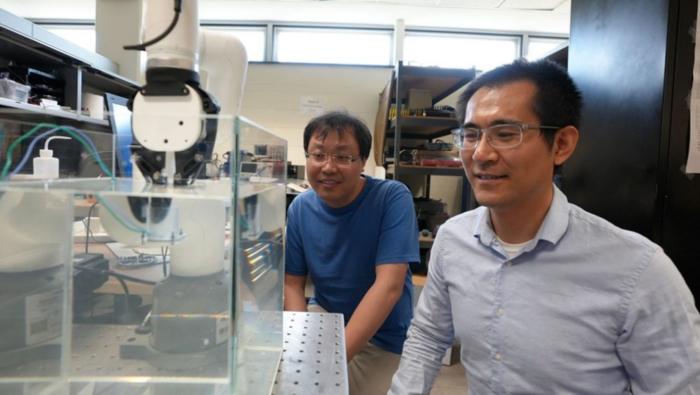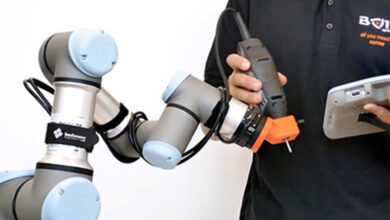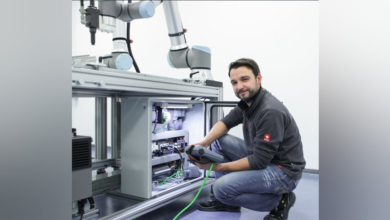Acoustic “Invisible Tweezers” Traverse Biological Tissues to Trap and Manipulate Target Objects

Researchers headed by a team at Virginia Polytechnic Institute and State University have developed a robot-assisted surgical technique that uses acoustic vortex tweezers to capture and move small targets—such as cells and drugs—within the body, without the need for surgical incision. Reporting on the technology in Science Advances, the team, led by assistant professor Zhenhua Tian, PhD, demonstrated how the acoustic technology can penetrate through biological tissues to reach its target molecules or structure, and manipulate them in 3D space. The authors suggest that with further development, the technology could have applications in fields including biomedical engineering and advanced manufacturing.
The system is described in a paper titled, “Robot-assisted chirality-tunable acoustic vortex tweezers for contactless, multifunctional, 4-DOF object manipulation,” in which the scientists stated, “The functionalities demonstrated by our developed platform prove its huge potential in a wide range of applications ranging from advanced manufacturing to clinical medicine.”
Undergoing surgery can sometimes be highly invasive. Over recent years a combination of improvements in surgical procedures and the use of robotics have advanced surgical techniques. While surgery using robots is still invasive, robotic-assisted tools can be smaller, and so the cuts also tend to be smaller than in traditional surgeries. Advantages to patients include less discomfort and bleeding, reduced length of stay in hospital, and faster recovery times. Some of the most common procedures involving robotics include appendectomies, hysterectomies, and gastric bypasses.
Robotic-assisted surgery has its share of advantages, but the technology developed by Tian and colleagues represents a new advancement that combines robotics with noninvasive acoustics. Their method can move small targets, such as cells and medicine, within a body, without the need to make any incisions.
The technology harnesses acoustic energy emitters that can be used to surround and capture particles, working like invisible tweezers. The emitters create 3D acoustic vortex fields that can pass through barriers such as bone and tissue, crossing over one another to form tiny ring-shaped acoustic traps. Micro- to millimeter-sized objects caught at the center of an acoustic trap can be then moved and rotated. Tian received a 2024 National Science Foundation Faculty Early Career Development Program (CAREER) award for the acoustic vortex development.
In their paper, the authors explained, “The robot-assisted chirality-tunable acoustic vortex tweezing system has two key modules: an acoustic device that can generate chirality-tunable acoustic vortex tweezers to trap and rotate single objects and a programmable robotic module to translate and tilt the acoustic device together with the trapped single objects in a large 3D space.”
By mounting an acoustic vortex emitter onto a robotic platform, the acoustic vortex beam can be moved at the micrometer scale. Accordingly, the particle trapping area can be precisely set in a 3D space, and moving a particle after its capture can be engineered.
In their paper, the researchers confirmed that the acoustic vortex beam could penetrate through both a 6 mm thick sample of pork belly to trap a 3 mm plastic sphere, and also penetrate through a real monkey skull (about 1.6 mm thick), to create tweezers that could suspend a plastic cube. They also created a structure to mimic a blood vessel, demonstrating that the robotically controlled system could move a small sphere up and down the y-shaped vessel. They wrote, “We also demonstrated through-biological-barrier acoustic vortex tweezers by transmitting acoustic vortex beams through a ~6-mm-thick tissue with the skin and a ~1.6-mm-thick skull to trap and rotate single objects and translating an object inside a Y-shaped channel in a 36-mm-thick branched blood vessel within soft tissue.”
This potential to move a tiny object along the winding path of a blood vessel can be a critical feature of the technology. “The ability to move cells and drugs around inside veins without breaking the skin creates new opportunities in medicine,” said Tian. “As we continue the work on this research, I anticipate we will find a host of new applications.”
While Tian’s team can use the technology to move a small object behind a solid structure, the acoustic vortex beams can also move particles within both gases and liquids. Although the current approach targets small particles within those substances, integrating the acoustic energy emitters together with robotics has applications beyond surgery and very small particles.
Contactless, robotic manipulation has potential in many other applications across engineering, biology, and chemistry research. Some of those may include controlling microrobots, handling delicate bioparticles, such as exosomes and cells, transporting hazardous reagent droplets, controlling self-assembly of colloidal materials, or arranging nanomaterials for composite fabrication.
The authors said, “We believe that the successful development of this type of robotic platform will advance a wide range of applications such as contactless handling of delicate biological samples (e.g., embryos, worms, zebrafishes, etc.) for separation and sorting, translation of objects in regions with biological barriers (e.g., tissue and skull), arranging of micro-objects for controlling self-assembly, and arranging cell distributions for biomanufacturing.”
Tian commented, “When we were recently participating in a STEM expo, the children who visited us enjoyed putting small beads into the invisible acoustic fields generated by our devices, but we would like to offer the opportunity for them to move larger objects. Next year, we hope to have a larger emitter that can hold a ping pong ball. It will be interesting to see how we plug that approach into our other research.”
The authors further stated, “To further push the boundary of this work our future research will investigate the manipulation of more biological samples such as cells, embryos, worms, and zebrafish; we will test our approach for manipulating objects in flowing media; and we will explore applications in biomedical engineering and advanced manufacturing.”



